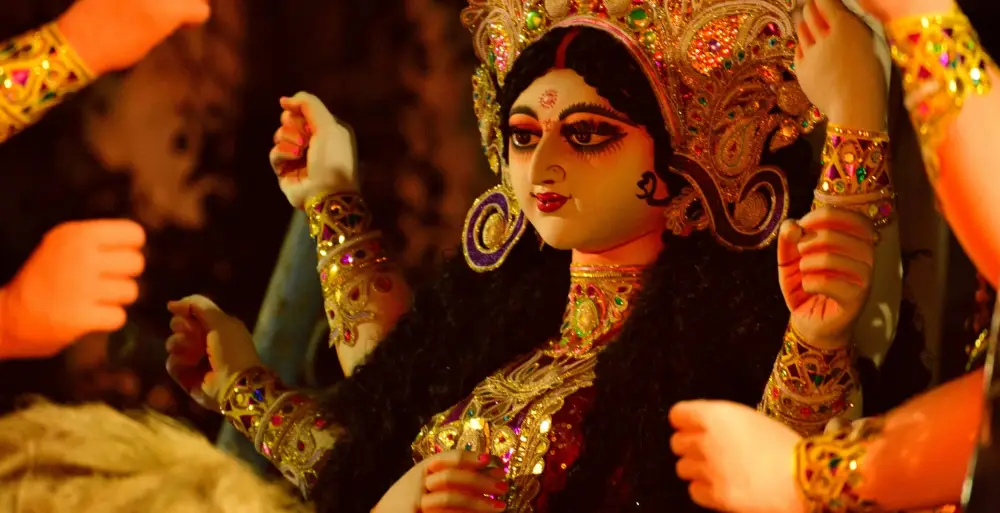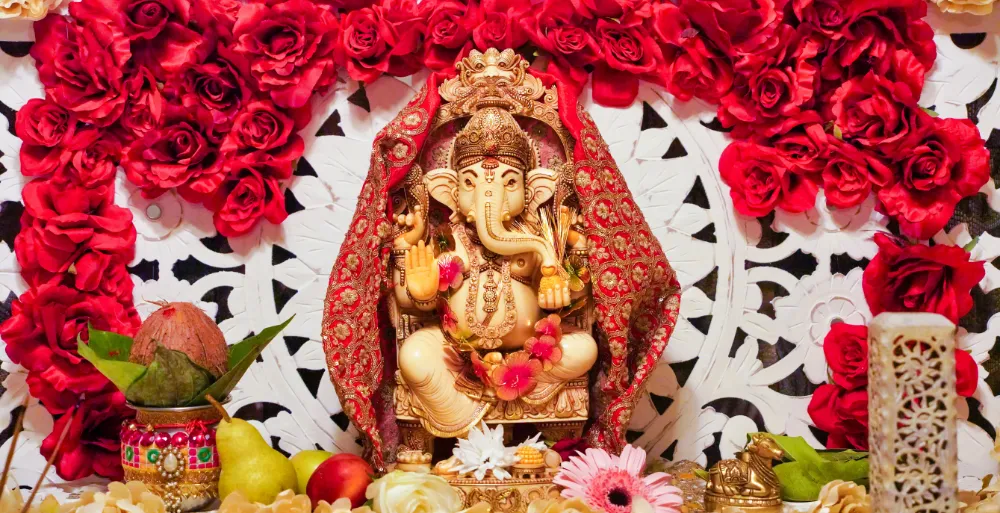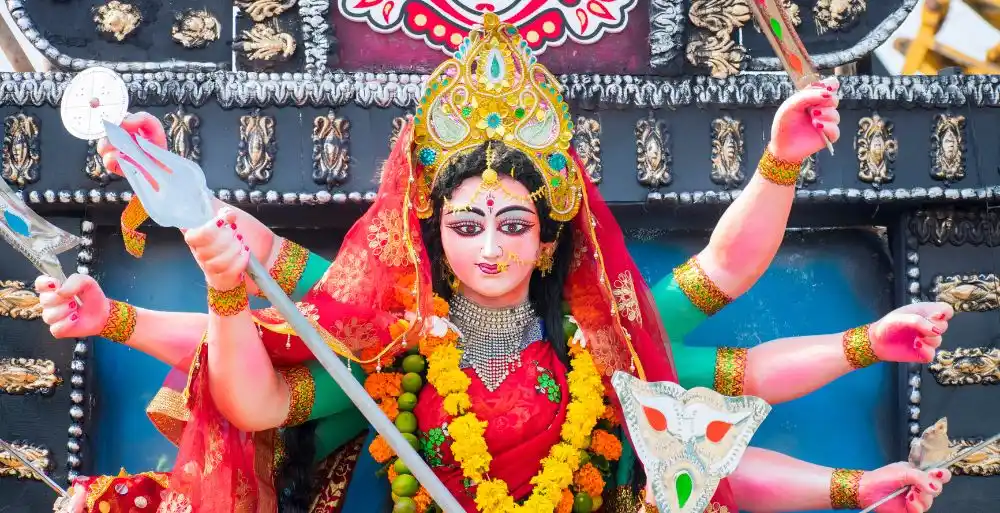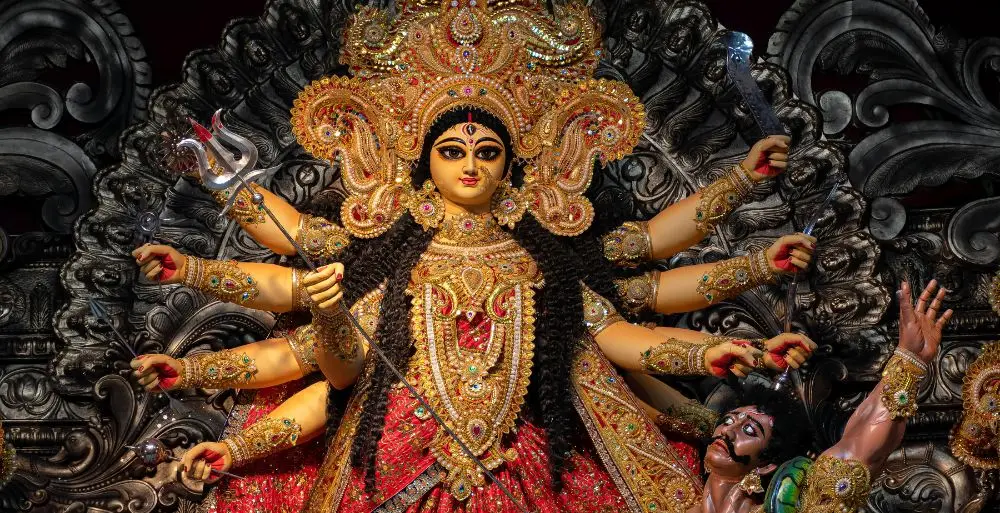Navratri is a vibrant nine-day Hindu festival that symbolizes the victory of righteousness over malevolence. Navratri is celebrated with great enthusiasm across India, with each day devoted to a different form of Goddess Durga. On the 9th day, devotees honor Goddess Siddhidatri, the bestower of all supernatural abilities (Siddhis). This final day holds deep religious significance, marking the culmination of Navratri and is considered the most auspicious for worshippers.
This day holds great spiritual importance and is often observed with grandeur and deep devotion. Let’s delve into the customs, significance, and ways to celebrate this divine day.

Who is Goddess Siddhidatri?

Goddess Siddhidatri is known as the 9th and final form of Goddess Durga. She is the epitome of knowledge, wisdom, and power. Her name, derived from the Sanskrit words “Siddhi” (perfection) and “Datri” (giver), denotes that she bestows all types of Siddhis upon her worshippers. According to Hindu mythology, Lord Shiva gained eight supernatural powers through her grace, making Goddess Siddhidatri a symbol of divine completeness.
Goddess Siddhidatri is depicted seated on a lotus or a lion, radiating peace and tranquillity. She holds a conch, mace, chakra, and lotus in her four arms, representing the power and authority she wields in the universe. Worshipping Goddess Siddhidatri on the 9th day of Navratri removes ignorance and darkness from devotees’ lives, guiding them toward spiritual enlightenment.
Also Read: 1st Day of Navratri: Goddess Shailputri Worship Guide

Rituals and Pooja Vidhi for the 9th Day of Navratri
On the 9th day of Navratri, people show their devotion by performing rituals that start early in the morning. They clean themselves and place a statue or picture of Goddess Siddhidatri at the altar. Then, they decorate the statue with flowers, incense, and kumkum, and offer fruits, sweets, and other treats.
Chanting special prayers and mantras is important to seek the goddess’s blessings, which bring peace, wealth, and the fulfillment of wishes. People also pray to thank the goddess for her spiritual wisdom and protection during Navratri.
In some families, they do a Kanya Poojan, a special ceremony where nine young girls represent the nine forms of Goddess Durga. They are worshipped and given food, new clothes, and gifts. This ceremony shows their respect and love for the feminine power that controls the universe.
Also Read: 2nd Day of Navratri: Worship Guide for Maa Brahmacharini

Significance of Color: Purple for the 9th Day of Navratri

On the 9th day of Navratri, known as the day of purple, this color symbolizes luxury, ambition, and power. People, especially women, wear purple to connect with Goddess Siddhidatri and attract her blessings. The goddess herself is often depicted in purple, reflecting her strength, wisdom, and nobility.
Also Read: 3rd day of Navratri: Goddess Chandraghanta Worship Guide

Spiritual Significance of the 9th Day of Navratri
On the 9th day of Navratri, also called Mahanavami, the intense spiritual practices from the previous eight days come to an end. This day is about achieving Siddhi, or spiritual success, and breaking free from worldly materialism. People who fast and pray with great dedication believe they will get divine blessings and have their wishes come true.
Worshipping the Goddess Siddhidatri on this day helps people get rid of their weaknesses, ignorance, and suffering. It’s a time to ask for her help in gaining inner strength, wisdom, and courage to deal with life’s challenges. Many people also meditate on this day to reach a higher level of awareness and strengthen their bond with the divine.
Also Read: 4th Day of Navratri: Goddess Kushmanda Worship Guide

Siddhidatri and Her Connection to Lord Shiva
In Hindu mythology, the Ardhanarishvara form of Lord Shiva, a composite androgynous figure, is attributed to Goddess Siddhidatri. Legend holds that Lord Shiva attained the Ardhanarishvara form after receiving all eight Siddhis (supernatural powers) from the goddess. This form represents the unity of masculine and feminine energies, symbolizing the balance and harmony that exists in the universe.
The eight Siddhis granted by the goddess include:
- Anima (ability to become small)
- Mahima (ability to grow large)
- Garima (ability to become heavy)
- Laghima (ability to become light)
- Prapti (ability to reach anywhere)
- Prakamya (ability to achieve whatever one desires)
- Ishatva (lordship over creation),
- Vashitva (control over natural forces).
Worshipping Goddess Siddhidatri is believed to bring balance in life and bestow spiritual wisdom, thereby helping devotees transcend the limitations of the physical world.
Also Read: 5th Day of Navratri: Maa Skandamata Worship Guide

Fasting and Offering on the 9th Day of Navratri

During Navratri, followers fast on the 9th day to show their devotion and look for spiritual growth. The day ends with eating special dishes like sabudana khichdi, kuttu roti, and fruit salads, along with sweets like kheer and halwa.
They also offer fruits, sweets, and flowers to the goddess, focusing on coconut, jaggery, and sesame seeds, which are seen as pure and lucky offerings to the goddess.
Also Read: 6th Day of Navratri: Celebrating the Triumph of Goddess Katyayani

The End of Navratri: Celebrating with Dussehra
Dussehra follows the 9th day of Navratri, celebrating Lord Rama’s victory over Ravana and symbolizing the triumph of good over evil. Marked by large gatherings and lively celebrations across the country, it also signifies the end of Navratri, as devotees immerse Goddess Durga’s idols in water, symbolizing her return to Mount Kailash until the next Navratri.
In West Bengal, the last day of Navratri is also Vijayadashami, celebrated with grand Durga Visarjan ceremonies. People pray for the goddess’s return next year with more blessings and prosperity.
Also Read: 7th Day of Navratri: Maa Kalaratri Worship Guide

Conclusion:
On the 9th day of Navratri, a festival honouring Goddess Siddhidatri, there’s a celebration of divine satisfaction and spiritual achievement. This day encourages contemplation of the blessings received during Navratri and offers a time to express gratitude for the protection, insight, and wealth granted by the goddess.
By participating in the rituals with deep devotion and connecting with the spiritual power of this day, followers can discover the way to enlightenment and everlasting tranquillity.





